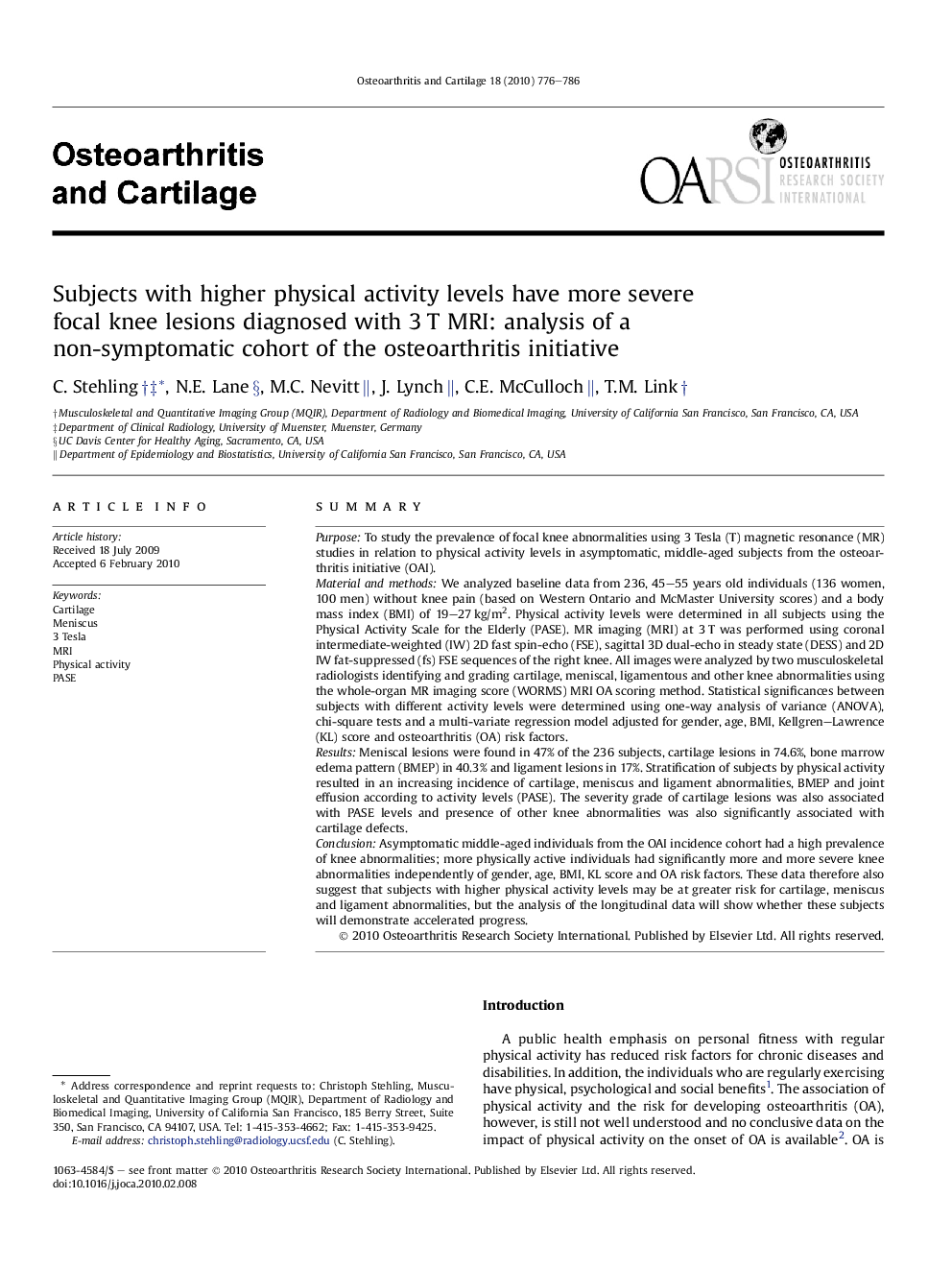| Article ID | Journal | Published Year | Pages | File Type |
|---|---|---|---|---|
| 3380365 | Osteoarthritis and Cartilage | 2010 | 11 Pages |
SummaryPurposeTo study the prevalence of focal knee abnormalities using 3 Tesla (T) magnetic resonance (MR) studies in relation to physical activity levels in asymptomatic, middle-aged subjects from the osteoarthritis initiative (OAI).Material and methodsWe analyzed baseline data from 236, 45–55 years old individuals (136 women, 100 men) without knee pain (based on Western Ontario and McMaster University scores) and a body mass index (BMI) of 19–27 kg/m2. Physical activity levels were determined in all subjects using the Physical Activity Scale for the Elderly (PASE). MR imaging (MRI) at 3 T was performed using coronal intermediate-weighted (IW) 2D fast spin-echo (FSE), sagittal 3D dual-echo in steady state (DESS) and 2D IW fat-suppressed (fs) FSE sequences of the right knee. All images were analyzed by two musculoskeletal radiologists identifying and grading cartilage, meniscal, ligamentous and other knee abnormalities using the whole-organ MR imaging score (WORMS) MRI OA scoring method. Statistical significances between subjects with different activity levels were determined using one-way analysis of variance (ANOVA), chi-square tests and a multi-variate regression model adjusted for gender, age, BMI, Kellgren–Lawrence (KL) score and osteoarthritis (OA) risk factors.ResultsMeniscal lesions were found in 47% of the 236 subjects, cartilage lesions in 74.6%, bone marrow edema pattern (BMEP) in 40.3% and ligament lesions in 17%. Stratification of subjects by physical activity resulted in an increasing incidence of cartilage, meniscus and ligament abnormalities, BMEP and joint effusion according to activity levels (PASE). The severity grade of cartilage lesions was also associated with PASE levels and presence of other knee abnormalities was also significantly associated with cartilage defects.ConclusionAsymptomatic middle-aged individuals from the OAI incidence cohort had a high prevalence of knee abnormalities; more physically active individuals had significantly more and more severe knee abnormalities independently of gender, age, BMI, KL score and OA risk factors. These data therefore also suggest that subjects with higher physical activity levels may be at greater risk for cartilage, meniscus and ligament abnormalities, but the analysis of the longitudinal data will show whether these subjects will demonstrate accelerated progress.
